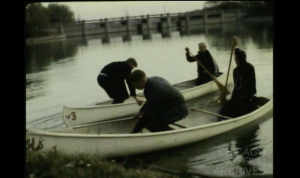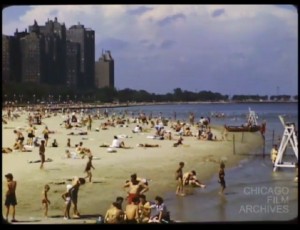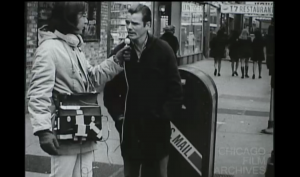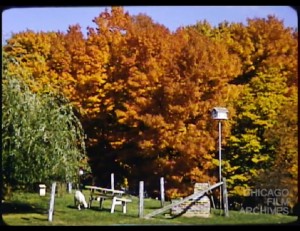
"A “city symphony” film, produced to encourage Photographic Society of America members to attend their 1963 conference in Chicago, City to See is a surprising film. It combines footage of Chicago with a deadpan commentary that pokes fun commercial travel films: “Chicago is my town,” the narrator says wryly, “and no other town will do.”" Chicago Film Archives

"Amateur silent film of a boy scout troop making a fiberglass canoe step by step from a mold, from start to finish. Boy scouts all help in each part of the process. They then take their finished canoes on a trip where they learn how to row their new canoes and camp out on the river." Chicago Film Archives
"Ship sails from Chicago, visits Japan's ports, cities, villages, etc. Views of modern with traditional." UC San Diego Library.

"A two part travelogue featuring travel and industry highlights on the shores of Lake Michigan. Part one includes scenes of Indiana, Illinois and Wisconsin while part two includes travel highlights of Indiana and Michigan." Chicago Film Archives.

"RATAMATA is a portrait of the diverse opinions of Chicagoans (ranging from high school students to habitual mayoral candidate Lars Daly) as they reflect on the general state of affairs in America, the war in Vietnam, social and racial conflict, freedom and personal liberty, happiness, and social justice." Chicago Film Archives

"A journey from bustling Chicago to the fall foliage and winter landscape of rural Wisconsin." Chicago Film Archives.
"The World's People, production of Edmund Zacher, II, ACL, and Herbert Johnson, ACL, with musical accompaniment and incidental sound effects by the record and double turntable method and with a narrative presented by Mr. Johnson through the sound system, offers a combination of visual and aural entertainment that is marked by a finish and perfection in cinematography and an interest and liveliness in accompaniment. The film describes a visit to the Century of Progress exposition in Chicago, featuring as its theme the many races and nations of the world represented there. The cinematography of Messrs. Zacher and Johnson is effortless and of uniformly high standard, is playing with intelligent restraint the effects used by professional cameramen. The combination of long shots, medium views and closeups leaves no beholder unsatisfied in any scene presented. There is a decidedly human character in the whole footage and the people are never overshadowed by architecture or machinery. In one place, two somewhat indignant ladies are seen in vigorous and disapproving conversation, for example, yet they are entirely unconscious actors. In continuity planning and execution, in cinematographic perfection and in a satisfying and informing use of excellent narrative, music and sound effects, The World's People sets a high standard in starting out to do a thing and doing it with sureness and real success." Movie Makers, Dec. 1934, 546.
Total Pages: 2